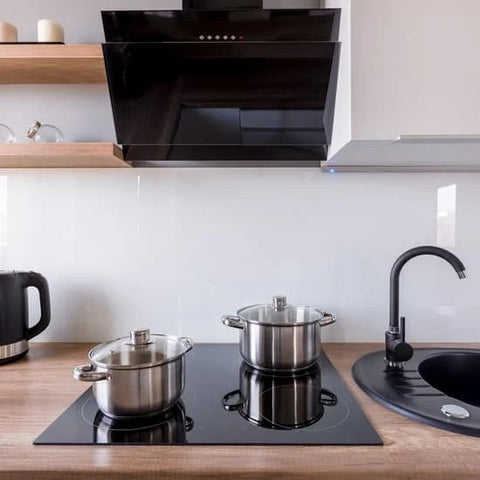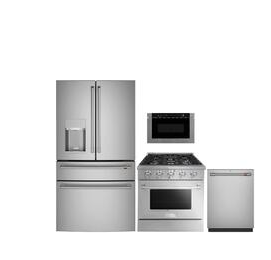What are the differences between a ceramic and an induction hob?

If you want to remodel your kitchen, you must pick between a ceramic or induction hob.
Then we discuss the differences between the two, their benefits and drawbacks, making a choice between induction or ceramic cooktop easy.
Difference between an induction hob and ceramic hob

The ceramic hob is a plate that generates heat using electrical resistances embedded in the ceramic glass. It is the most common form of kitchen and is found between induction and gas.
Creating the infrastructure to drive natural gas or charge butane cylinders was avoided; it immediately became popular.
The most significant benefit of glass-ceramic hobs is cleaning since they can be cleaned in 3 minutes with a cleaner and a towel. One disadvantage is that they take longer to heat up than induction hobs.
The induction hob, on the other hand, is gaining popularity. It doesn't have a heat source, but if a pan is put on top, the pan itself gets heated.
Induction plates work as a powerful electromagnet, producing a solid and alternating magnetic field. It pierces the pan's steel, creating tiny electrical currents.
Its most significant benefit is speed, enabling you to boil water in half the time of a regular gas burner.
Also, unlike ceramic hobs, the magnet does not heat the glass plate, preventing food residue from clinging to it.
Advantages and disadvantages of the consumption of the induction or ceramic hob
Advantages of ceramic hobs

As previously said, ceramic hobs were developed as an alternative to conventional gas stoves, leading many people to switch to electric cooking. It is a solution that has many benefits:
- Cheaper than induction cookers.
- They are simpler to clean than gas stoves and more beautiful.
- Unlike gas, it merely requires electricity installation.
- Their materials allow them to fit into various containers (supports iron, clay, aluminum).
- After shutting them off, keep the residual heat and cook with it..
Having stated the benefits, let us now look at the drawbacks:
- They take longer to heat and cool, causing an increase in utility costs.
- It requires specific cleaning chemicals to avoid scratching.
Advantages of induction cookers

The most recent induction plates create a magnetic field that makes heat energy when in contact with the container, making heat energy.
- Cookers that use induction technology utilize 20 percent less power than ceramic hobs because they create less energy and are thus more efficient.
- It warms up in a short period.
- They are safer since they employ more superior technology, which is particularly important in the case of youngsters.
- They are simple to maintain.
As for the downside, we have discovered that purchasing an induction stove is more costly than buying a ceramic hob or a gas oven. Despite this, the supply is growing, and as a result, the costs are becoming somewhat more affordable.










